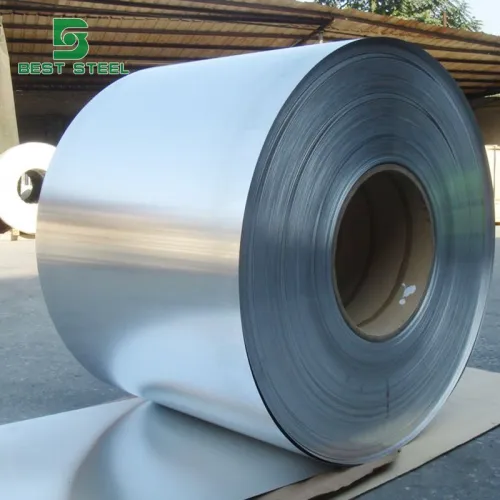Your Position: Home - Construction & Real Estate - Unveiling the Intricate Process of Aluminum Coil Production
Aluminum coils, the backbone of numerous industries, undergo a meticulous and sophisticated manufacturing process that transforms raw materials into versatile and functional components. We delve into the intricacies of the aluminum coil production process, shedding light on the steps that culminate in the creation of this indispensable material.

The journey of aluminum coil production begins with the extraction of bauxite, a naturally occurring mineral that serves as the primary source of aluminum. This mineral is refined to obtain alumina, a white powder that forms the foundation of aluminum production. The subsequent steps outline the process of transforming alumina into the versatile aluminum coils used across various industries:
The Bayer process involves refining bauxite to extract alumina through a series of chemical reactions. Bauxite ore is crushed and mixed with a hot, concentrated solution of sodium hydroxide to dissolve the aluminum oxide present. This solution is then filtered to remove impurities, leaving behind a concentrated alumina slurry.
The Hall-Héroult process is employed to reduce alumina into aluminum metal. In this electrolytic reduction process, alumina is dissolved in molten cryolite within an electrolytic cell. A direct current is passed through the cell, causing the aluminum ions to migrate to the cathode, where they are reduced to form liquid aluminum. This liquid aluminum is then collected and cast into large blocks known as ingots.
The ingots are subjected to a continuous casting process, where they are melted and cast into slabs or billets. This process ensures the creation of a uniform and high-quality metal form that serves as the starting point for subsequent fabrication.
The hot rolling process involves feeding the aluminum slabs or billets through a series of rolling mills that gradually reduce their thickness. The high temperature during hot rolling improves the metal's malleability and allows for precise thickness control.
Following hot rolling, the aluminum undergoes cold rolling, a process that further refines its thickness and surface quality. Cold rolling also imparts desirable mechanical properties to the aluminum. Annealing, a heat treatment process, is often employed to enhance the metal's ductility and reduce residual stresses.
Aluminum coil destined for specific applications may undergo coating and finishing processes. Coatings can enhance the aluminum's corrosion resistance, improve aesthetics, or provide specialized properties. Coating methods may include painting, anodizing, or applying a protective layer.
The final step involves slitting and cutting the aluminum coils into desired widths and lengths, tailored to the requirements of various industries. Precise cutting ensures that the coils are ready for incorporation into a wide range of applications.
In conclusion, the process of aluminum coil production is a complex and intricate journey that begins with raw materials and culminates in the creation of versatile and functional components. At BEST STEEL, we are committed to delivering premium aluminum coils that uphold the highest standards of quality and performance, contributing to the success of industries worldwide.
198
0
0
Comments
All Comments (0)